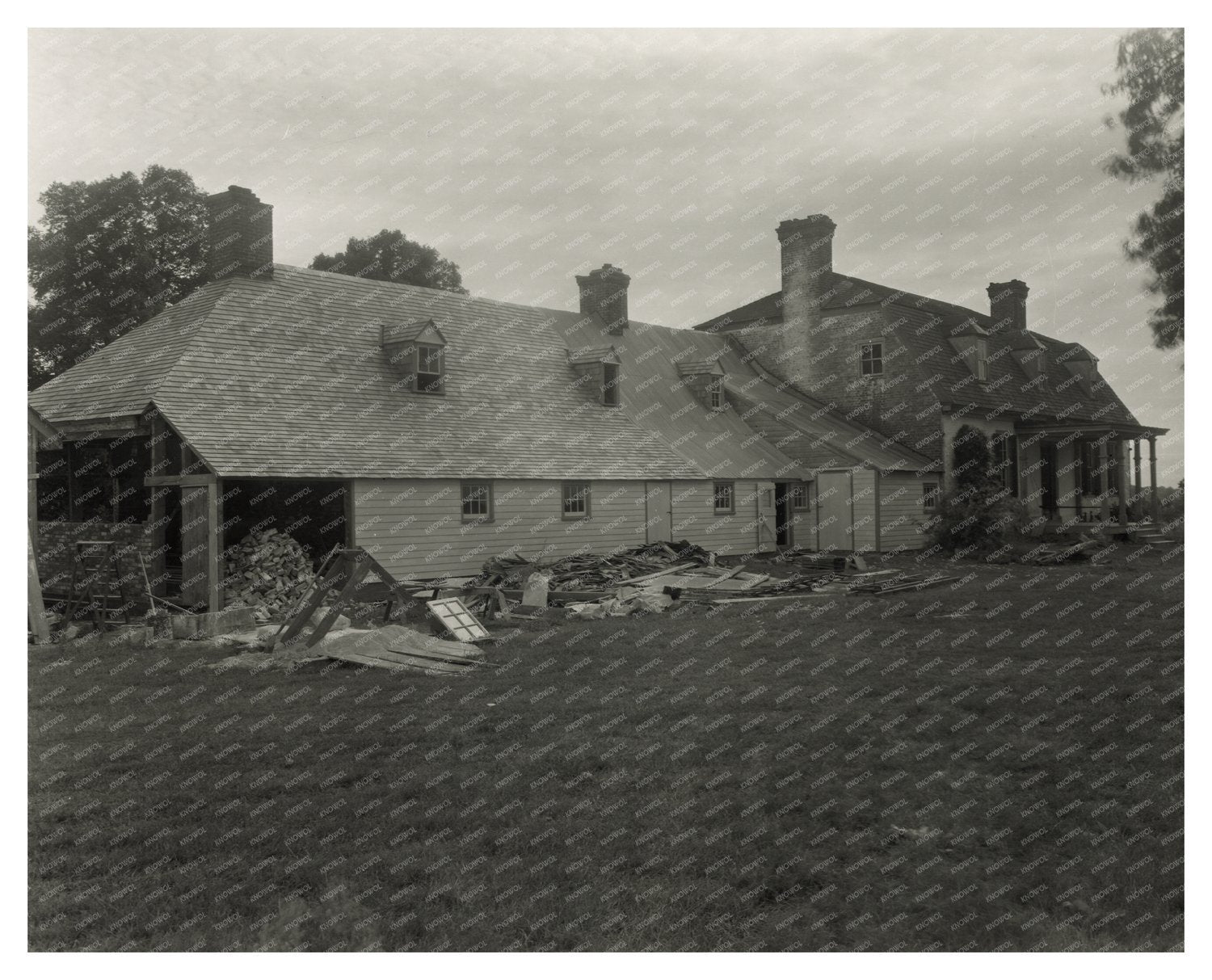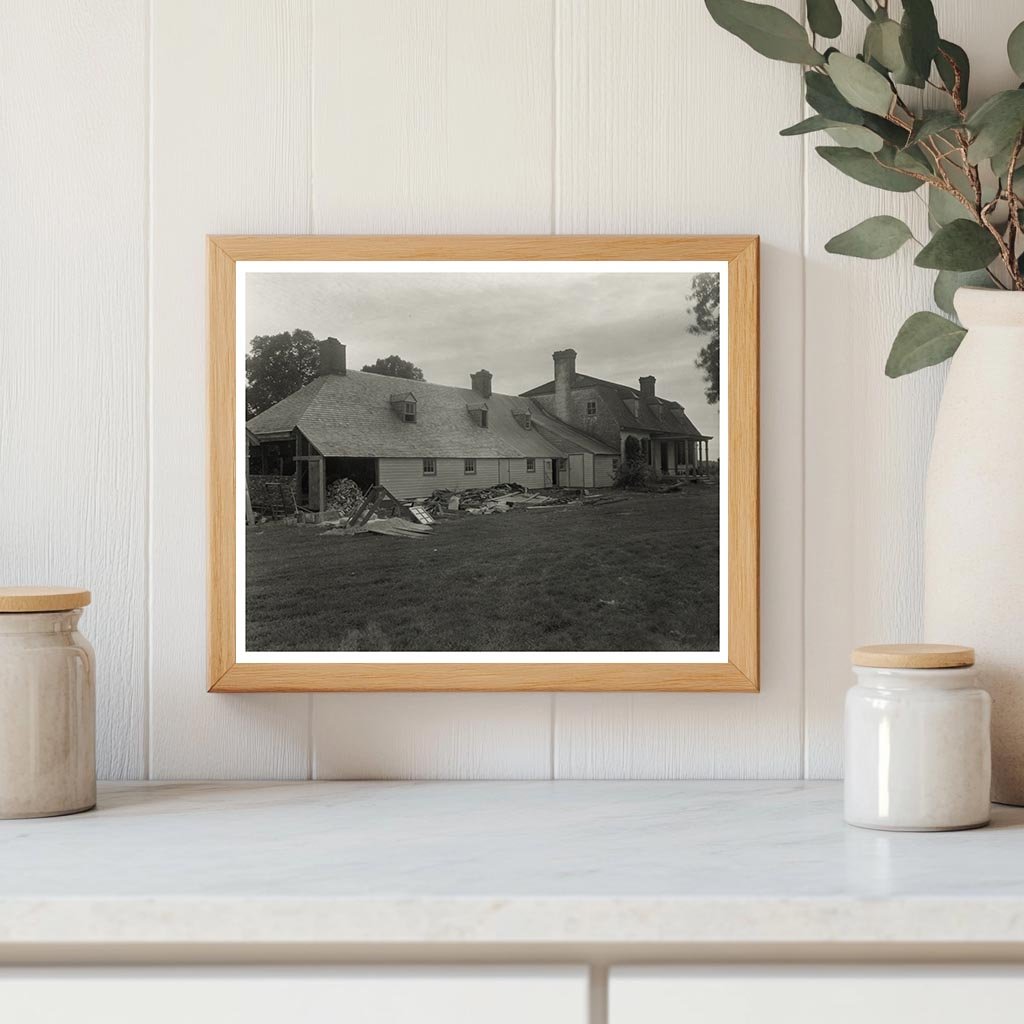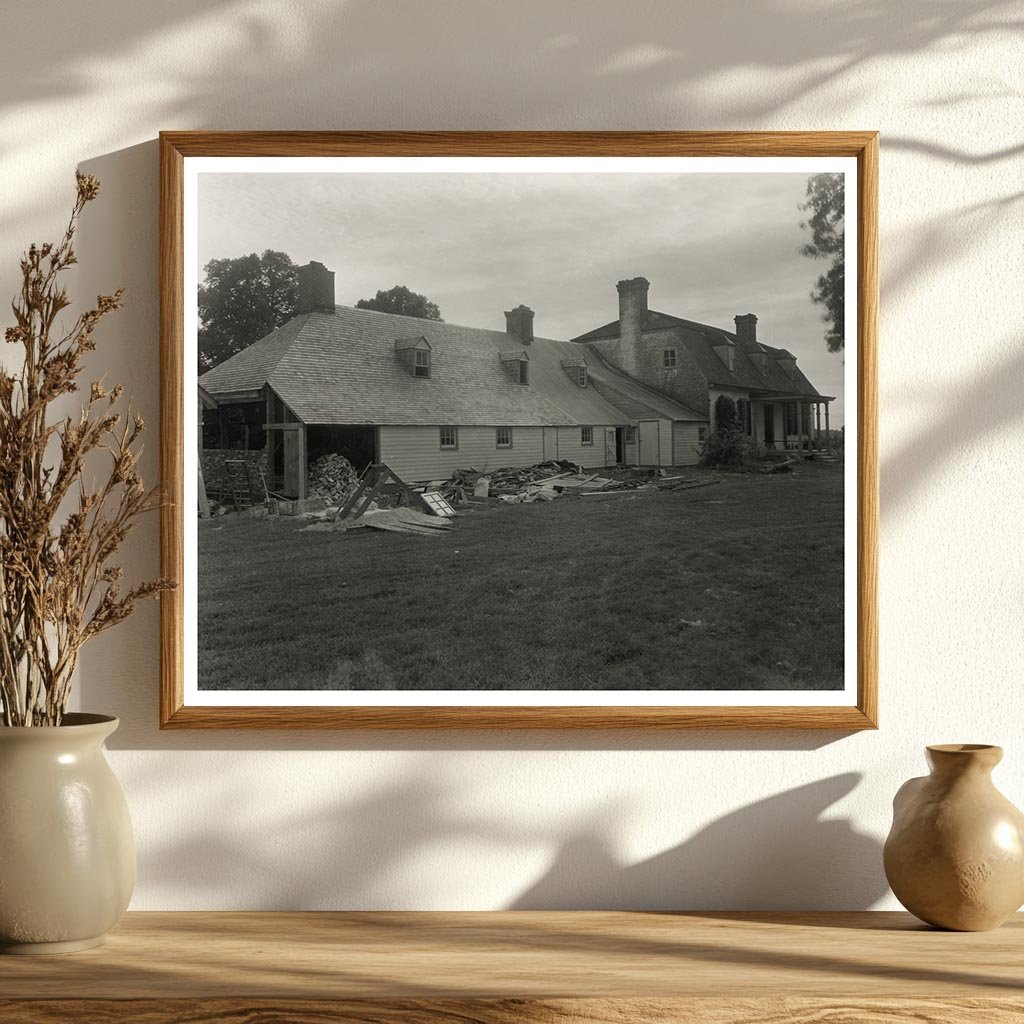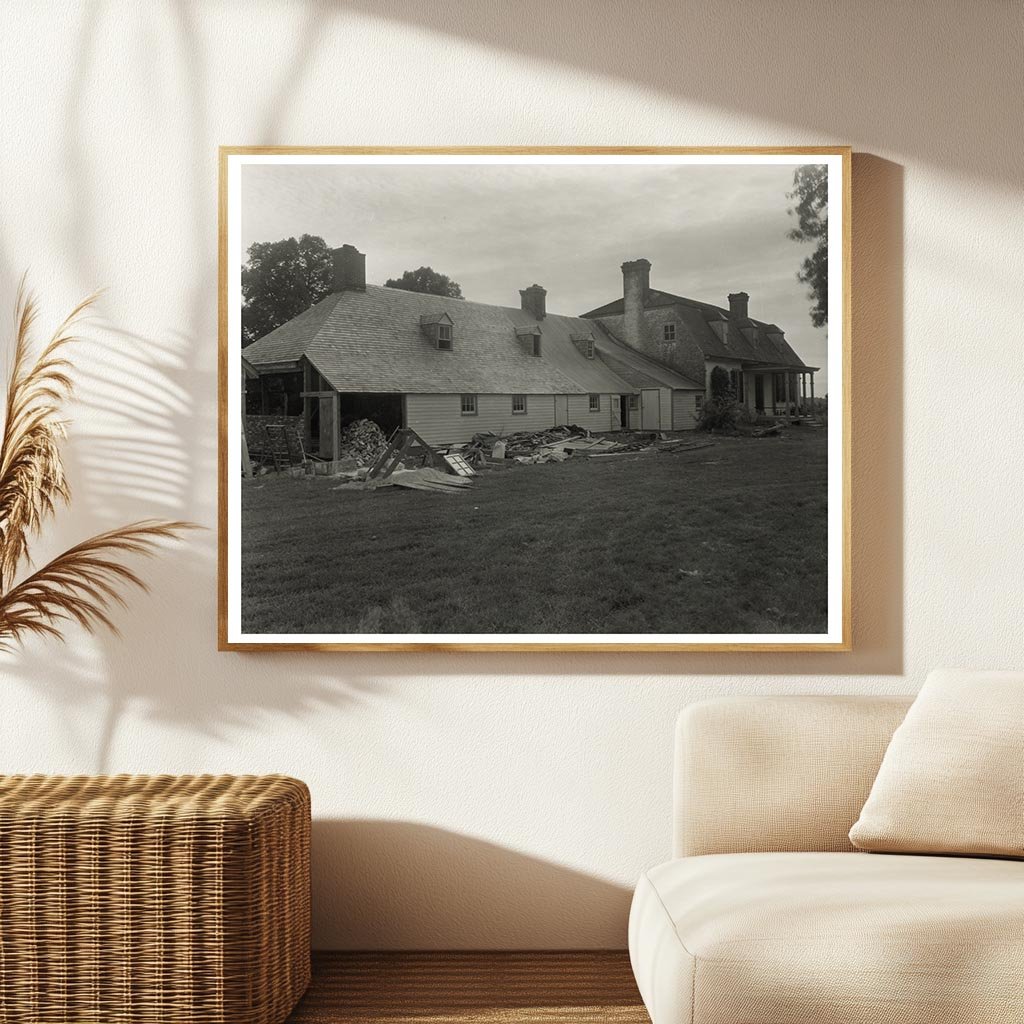



Paca House, MD 1747: Historic Architecture Photo
This vintage photograph showcases the Paca House, located in Queen Anne County, Maryland. Constructed in 1747 by William Paca, a prominent figure in American history who served as Governor of Maryland, this historic structure is notable for its impressive length of 120 feet. The house is situated on a hill overlooking the Wye River, a strategic location that reflects Paca’s status and influence during the colonial period.
The Paca House is a significant example of early American architecture and is part of the Carnegie Survey of the Architecture of the South. The Carnegie Survey aims to document the rich architectural history of the Southern United States, making this image an important representation of that initiative.
This photograph, contributed by the Frances Benjamin Johnston estate in 1953, serves not only as a visual record but also as a testament to the craftsmanship and historical significance of Maryland’s colonial buildings. Collectors and history enthusiasts will find value in this detailed glimpse into the past.

Paca House, MD 1747: Historic Architecture Photo
